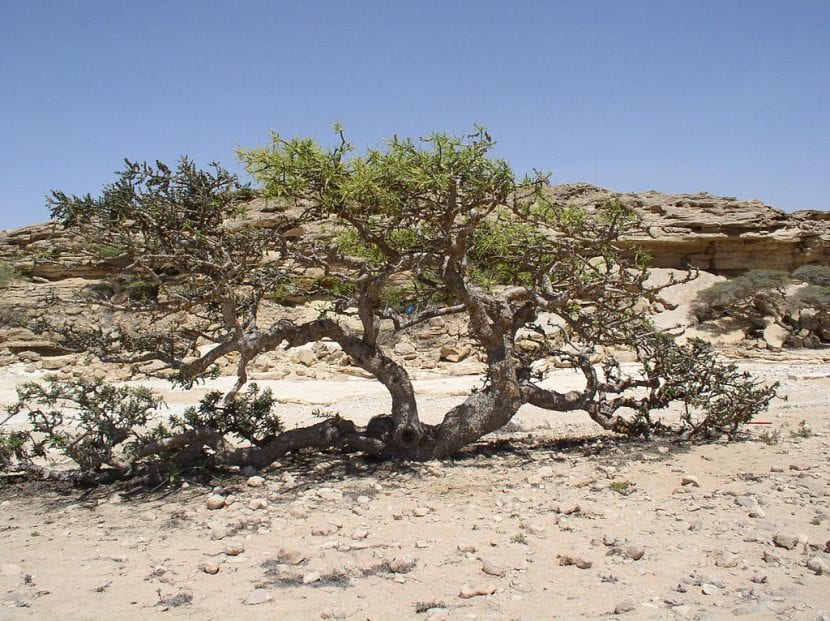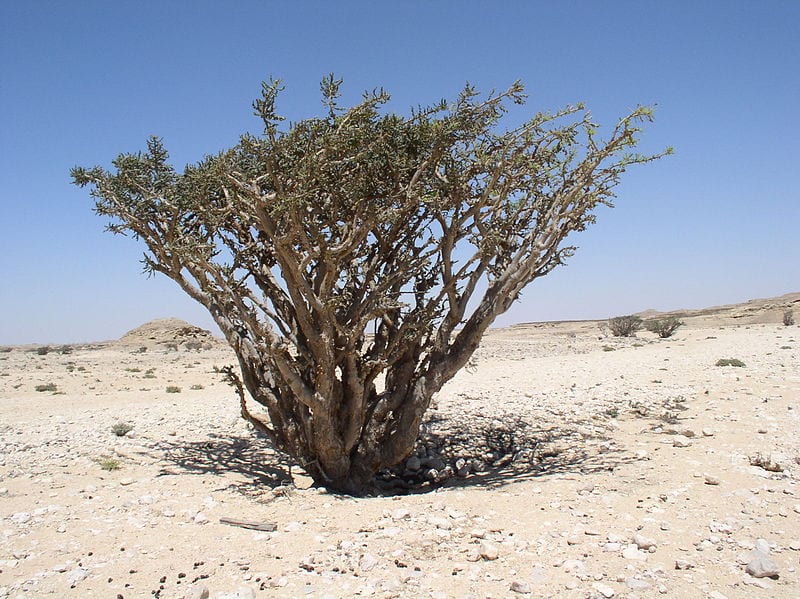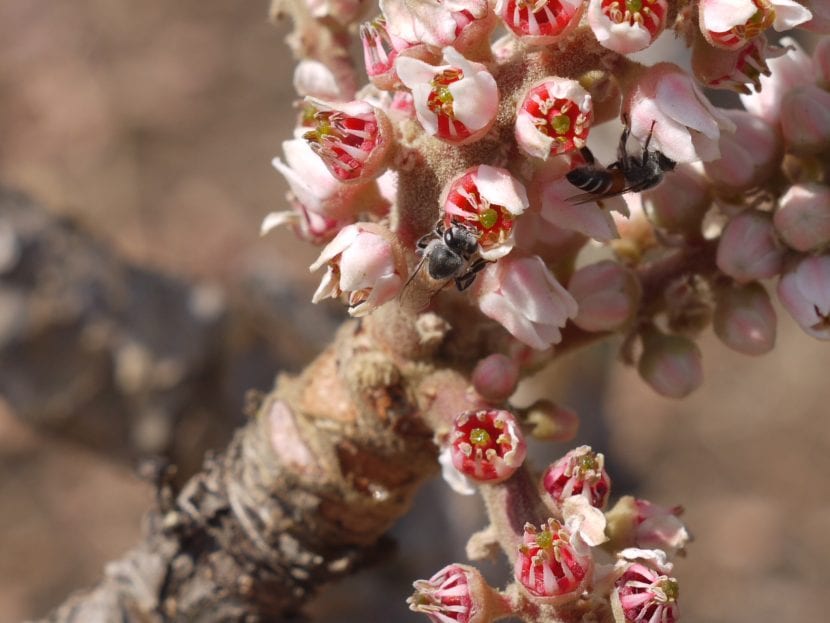
Image - Wikimedia / Scott Zona from USA
The least interesting thing about plants is that there are so many that one life is not enough to know them all. But in this blog we want to introduce you to the more the better so that you can have the garden, the patio, the terrace or the balcony that you always dreamed of. On this occasion, we are going to talk to you about the Boswellia, a genus of medicinal trees capable of withstanding drought without problems.
In fact, the conditions in which they have to live are almost those of a desert: temperatures around 50ºC (and even more) during the day, rather scarce rainfall, sandy soil that is not capable of having too many nutrients ... In short , what they are highly recommended for growing in hot tropical regions, as well as in places where frosts are very weak and short-lived.
Origin and characteristics of Boswellia

Image - Wikimedia / Mauro Raffaelli
Boswellia are a genus of deciduous trees (they lose their leaves in the dry season), usually thorny, originating in the warm and rather dry regions of Asia and Africa. It comprises about 30 accepted species. Its trunk is straight and its crown is rounded, composed of finger and glabrous leaves. They can reach a height of 2 to 10 meters.
The flowers are solitary or they are grouped in inflorescences. These sprout at the end of the branches, before the leaves appear, and are red or white. The fruit is an ovoid capsule that contains numerous seeds, also ovoid, black or gray.
Main species
The most popular are:
Boswellia sacra

Image - Wikimedia / Mauro Raffaelli
Known as the frankincense tree, it is a tree native to Somalia, Ethiopia, Yemen and Oman. It reaches a height of 2 to 8 meters, with one or more logs.
It is one of the species from which incense is extracted, making a shallow incision in the trunk or branches, or removing a part of the bark.
Boswellia serrata

Image - Wikimedia / Mauro Raffaelli
Known as oliban or incense tree of India, it is a tree native to India, specifically from Rajasthan and Madhya Pradesh.
The extracts obtained from this plant have been studied to treat osteoarthritis of the knee, but you should know that the essential oil of the resin contains substances that can be toxic, such as estragole.
What are their cares?
If you dare to have a copy, we recommend you take care of it as follows:
Climate
So that Boswellia can grow well, it is important that the weather is warm, or even very warm (no more than 50ºC during the day). They can withstand some cold, but will grow better if the temperature does not drop below 0 degrees.
Earth
- Flower pot: fill with porous substrates, being especially recommended the akadama, the pumice, or similar. Another option is to mix universal substrate with perlite in equal parts. In this way, excess water will be able to flow out quickly, reducing the risk of root rot.
- Garden: grow on calcareous soils, with good drainage.
Irrigation
Rather little. Once or twice a week during the hottest and dry season, and every 15 to 20 days the rest of the year. In any case, if in doubt, check the humidity of the soil before watering by inserting a thin wooden stick, for example.
Avoid wetting the leaves, especially if the sun hits them at that time, otherwise they could burn. And if you have them in a pot, don't forget to remove any excess water 20 minutes after watering.
Subscriber

Image - Wikimedia / Mauro Raffaelli
It is advisable to pay them from early spring to late summer, if possible with organic fertilizers such as compost, herbivorous animal manure, among others.
Multiplication
The Boswellia multiply by seeds in spring-summer, following this step by step:
- First, put them in a glass of water for 24 hours. After that time, stay only with those that have sunk, since those that float are most likely not viable (although you can always plant them in a separate seedbed).
- Then, fill the seedbed you have chosen (pots, seedling trays, ...) with universal substrate (for sale here) mixed with perlite in equal parts, and water.
- Then, place the seeds making sure they are a little separated from each other, avoiding making piles.
- Then, sprinkle sulfur on top to prevent fungus from growing, and cover them with a thin layer of substrate.
- Finally, water again, this time with a sprayer to moisten the most superficial layer of the substrate, and place the seedbed outside, in full sun.
Keeping the substrate moist, but not waterlogged, they will germinate in about two weeks.
Pruning
They don't need it. Remove only the branches that you see are drying out.
Planting or transplanting time
In spring.
Rusticity
The adult and acclimatized specimens they can resist up to -1ºC provided they are very occasional and short-lived frosts, but it is preferable that the climate is warm all year round.
What uses are given to Boswellia?

Ornamental
They are very decorative plants, which can be grown in small or medium gardens No problem. In addition, since they do not grow very much, they are even grown in pots.
Medicinal
Some species, such as Boswellia sacra, are used as medicinal to treat colds, bronchitis and other respiratory diseases, as well as ulcers, myalgia and muscle pain.
Did you know these trees?